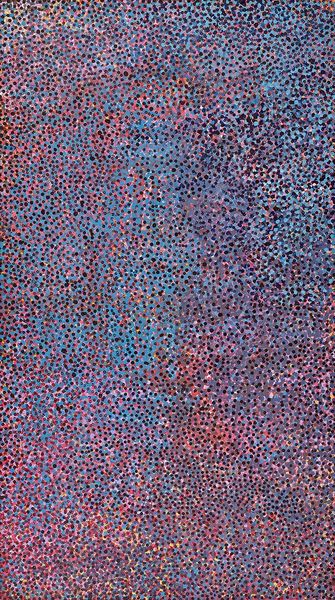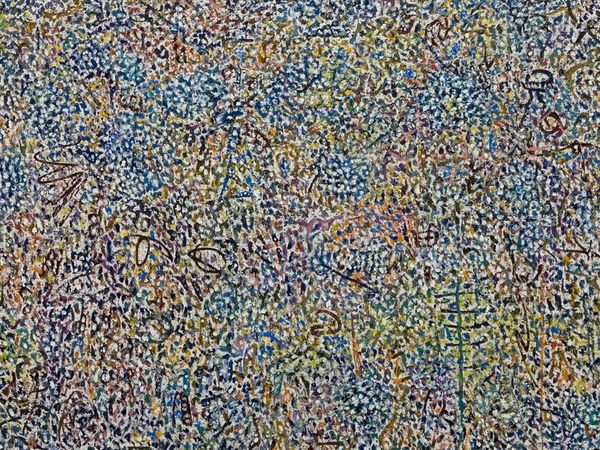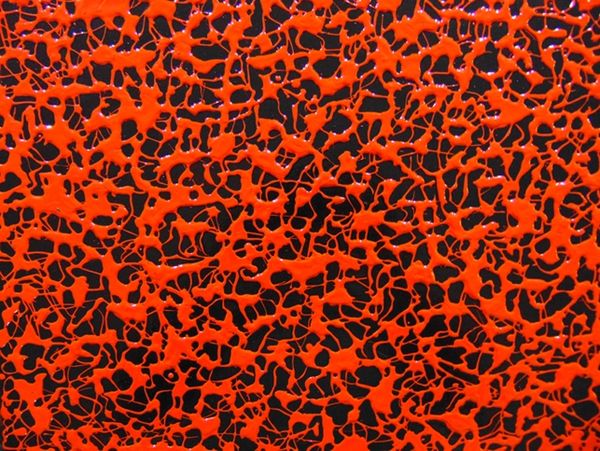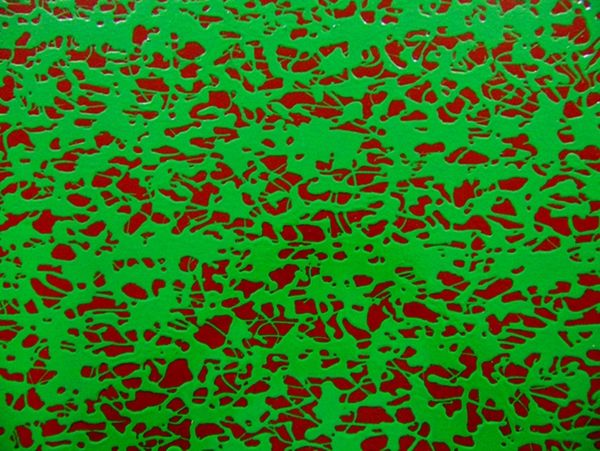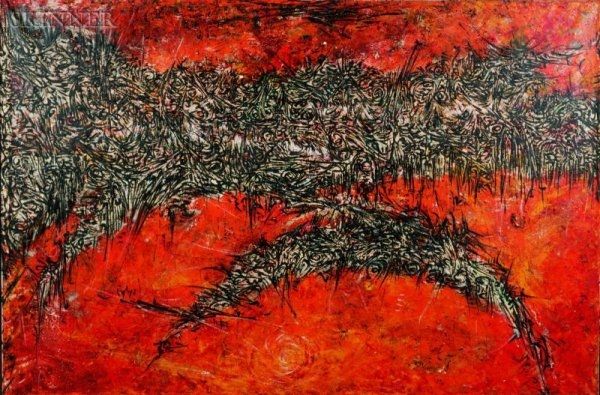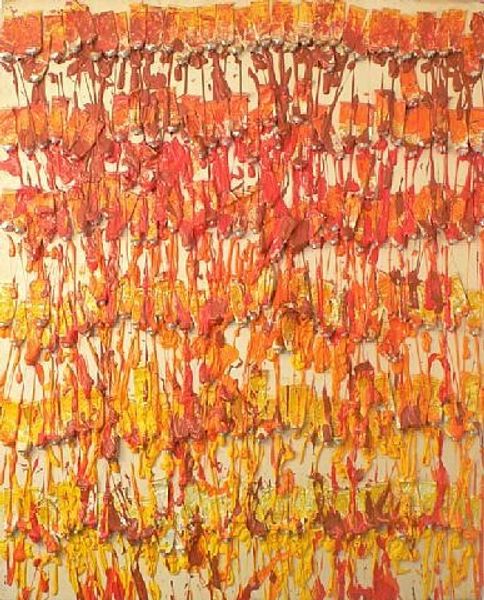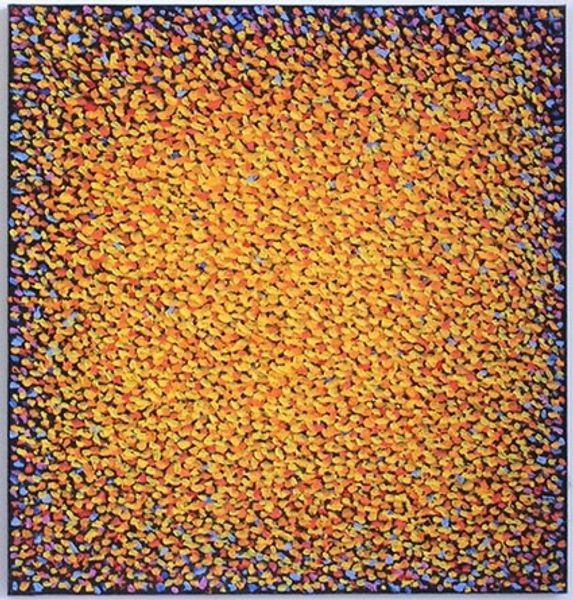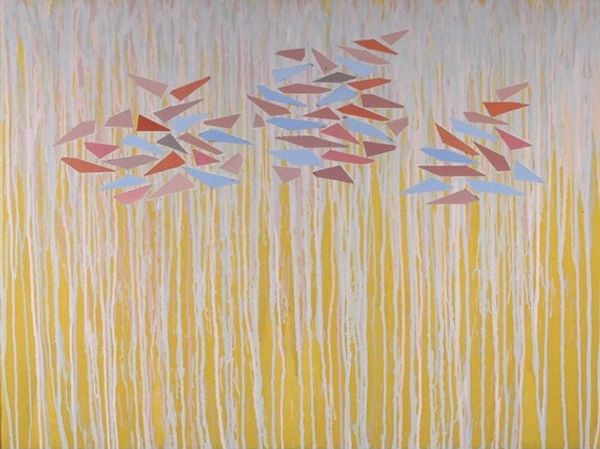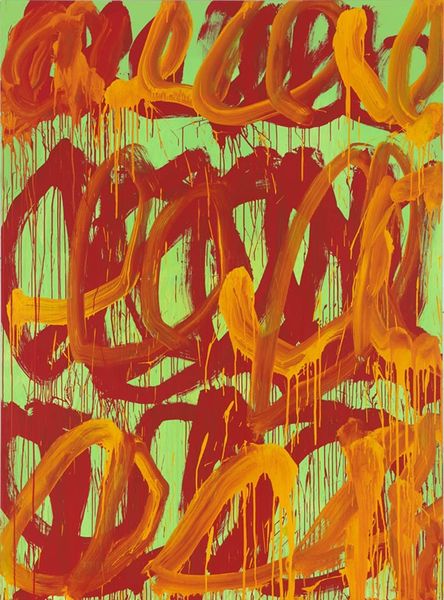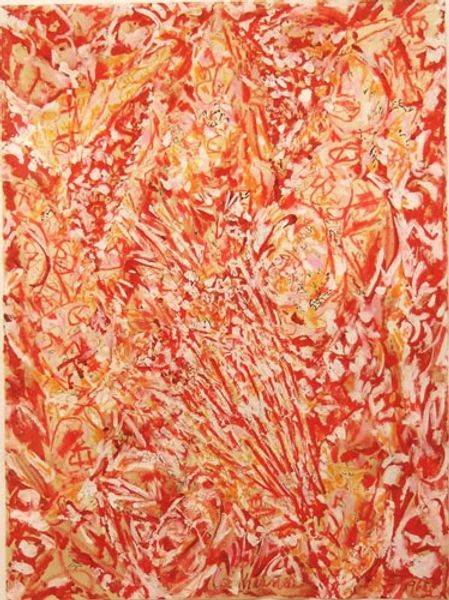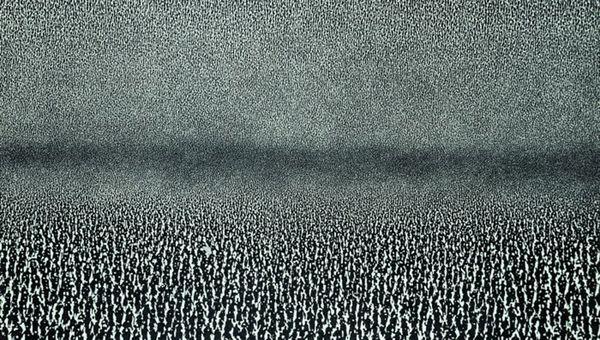
painting
#
abstract expressionism
#
organic
#
painting
#
geometric pattern
#
abstract pattern
#
organic pattern
#
abstraction
#
line
#
abstract art
Copyright: Abie Loy Kemarre,Fair Use
Curator: Immediately, this painting presents itself as a dense field of intricate marks, drawing the eye into a mesmerizing pattern. It feels simultaneously chaotic and ordered, like a swarm captured mid-flight. Editor: We’re looking at "Bush Medicine Leaves" created in 2019 by Abie Loy Kemarre. Kemarre, an Anmatyerre artist, uses acrylic paint to portray this significant aspect of her cultural heritage and lived experience. Curator: I'm intrigued by the rhythmic repetition of these leaf-like forms, almost calligraphic in their execution. Semiotically, the painting employs a highly structured visual language of the Australian desert, which could relate to indigenous traditions or knowledge systems. Editor: Absolutely. The “Bush Medicine Leaves” series illustrates the artist’s connection to her land, a site of identity and cultural production where ancestral narratives converge. Bush medicine plays an essential role in the physical and spiritual wellbeing of Aboriginal communities, especially for women as knowledge holders and transmitters of ancestral laws and healing practices. Curator: It seems like each individual mark, each “leaf”, has a distinctive quality while adhering to a common form—an almost minimalist yet ornamental style. Is this abstraction an intentional move to detach the art from external, symbolic representation, allowing the visual elements to assume significance independently? Editor: That's where the historical context comes in. Consider that, while appearing abstract, this intricate pattern directly references a plant species in the Australian desert with medicinal properties and profound symbolic meaning for the artist and her community. So, the abstraction becomes a strategic act of cultural preservation and transmission of traditional knowledge. Curator: Considering these overlapping contexts – cultural, medicinal, and historical – makes this work all the more captivating. It shows us how close aesthetic analysis can be deepened and problematized through an awareness of social and cultural implications. Editor: Precisely, by layering these approaches we appreciate the artwork beyond its aesthetic qualities and into the social realities from which it emerged, giving a fuller, richer understanding.
Comments
No comments
Be the first to comment and join the conversation on the ultimate creative platform.
